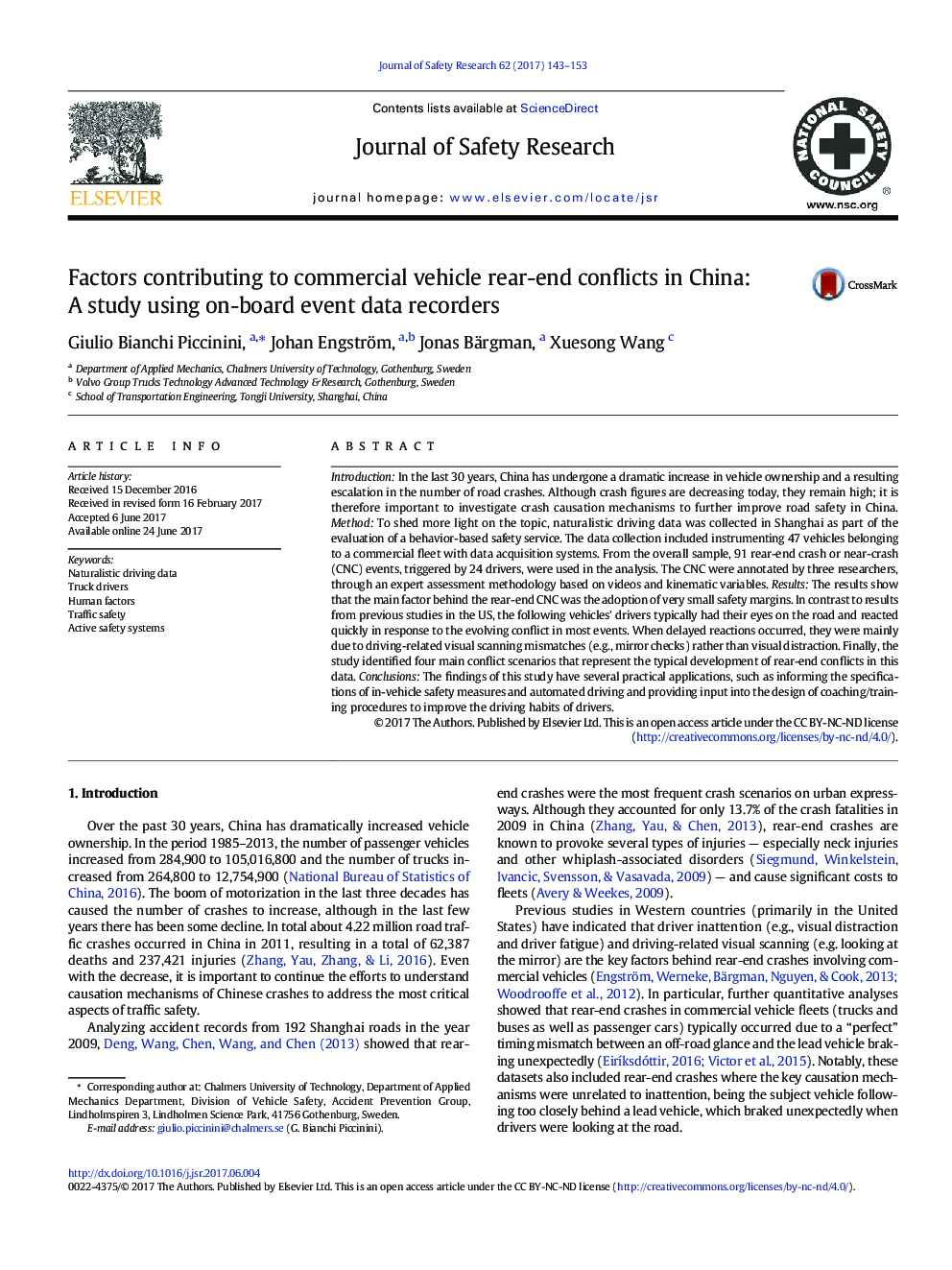| کد مقاله | کد نشریه | سال انتشار | مقاله انگلیسی | نسخه تمام متن |
|---|---|---|---|---|
| 4980535 | 1453298 | 2017 | 11 صفحه PDF | دانلود رایگان |
- Naturalistic data were collected in Shanghai for 47 commercial vehicles.
- A causation mechanism analysis was performed to 91 rear-end crash/near crash (CNC).
- The adoption of small safety margins is the most common factor behind rear-end CNC.
- Crash causation mechanisms differ in Chinese and Western countries' rear-end CNC.
- The findings of the study provide suggestions for the design of automated driving.
Introduction: In the last 30Â years, China has undergone a dramatic increase in vehicle ownership and a resulting escalation in the number of road crashes. Although crash figures are decreasing today, they remain high; it is therefore important to investigate crash causation mechanisms to further improve road safety in China. Method: To shed more light on the topic, naturalistic driving data was collected in Shanghai as part of the evaluation of a behavior-based safety service. The data collection included instrumenting 47 vehicles belonging to a commercial fleet with data acquisition systems. From the overall sample, 91 rear-end crash or near-crash (CNC) events, triggered by 24 drivers, were used in the analysis. The CNC were annotated by three researchers, through an expert assessment methodology based on videos and kinematic variables. Results: The results show that the main factor behind the rear-end CNC was the adoption of very small safety margins. In contrast to results from previous studies in the US, the following vehicles' drivers typically had their eyes on the road and reacted quickly in response to the evolving conflict in most events. When delayed reactions occurred, they were mainly due to driving-related visual scanning mismatches (e.g., mirror checks) rather than visual distraction. Finally, the study identified four main conflict scenarios that represent the typical development of rear-end conflicts in this data. Conclusions: The findings of this study have several practical applications, such as informing the specifications of in-vehicle safety measures and automated driving and providing input into the design of coaching/training procedures to improve the driving habits of drivers.
Journal: Journal of Safety Research - Volume 62, September 2017, Pages 143-153
